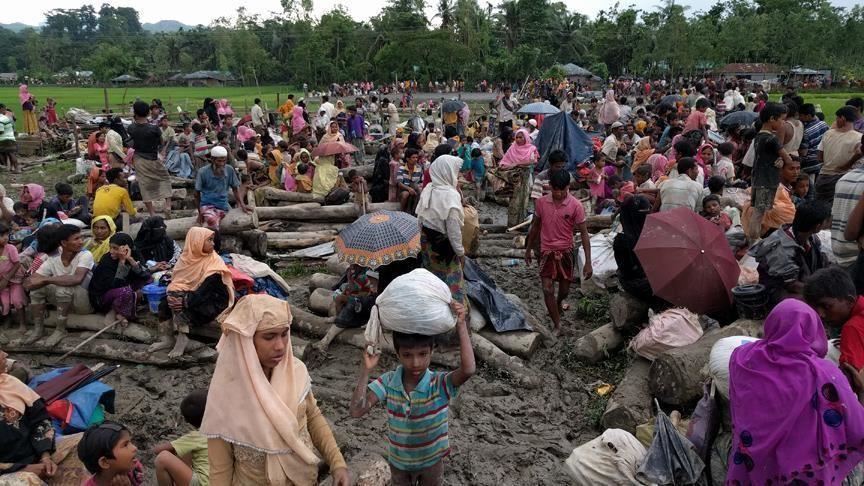ID :
563004
Sat, 04/18/2020 - 21:02
Auther :
Shortlink :
http://m.oananews.org//node/563004
The shortlink copeid
India: Rohingya in pandemic red zone face starvation

New Delhi, India
A Rohingya refugee camp located in Nuh district, in the outskirts of Indian capital New Delhi is facing a severe food shortage, say the inmates.
Since the district located in Haryana province just 100 kilometers (62.1 miles) from the national capital is under severe lockdown after declared as coronavirus or COVID-19 red hotspot, voluntary groups have been unable to deliver food and essentials. Like Nuh, India has declared 107 places as red hotspots.
District administration said though so far, no infected case has been reported form the Rohingya camp, that houses 250 families, the adjoining areas have reported 48 cases.
Speaking to Anadolu Agency, resident of the camp Jafarullah said he, along with others, has been running from pillar to post to procure essentials for his community, since the enforcement of lockdown. He worries that his community may die of starvation rather than COVID-19.
On Friday the central government directed all the provinces to screen Rohingya refugees camping in India.
As per UNHCR data, around 40,000 Rohingya have taken refuge in India over the past decade. While the UN body has provided refugee cards to 17,500, India does not recognize this document, since it is not a signatory to the UN Convention on Refugees.
In a statement issued by the Home Ministry, the screening of Rohingya has become necessary as it was noticed that many of them had attended the religious gathering arranged by Tablighi Jamaat. The Jamaat is under fire in India for going ahead with its gathering in March, despite the outbreak of a pandemic.
“Rohingya residing in camps in Hyderabad had attended Tablighi Jamaat gathering at Haryana, and had also attended the meet at the national capital's Nizamuddin,” said the statement.
The extension of lockdown until May 3, has further worried Rohingya refugees, who mostly depend on donations and help from NGOs.
"When Prime Minister Modi announced the first lockdown on March 22, we were worried but somehow managed the situation. But with Nuh district declared as a red zone, our problems have increased exponentially. Police beat us up if we go out to buy food items and medicines, and thus we worry more about dying of hunger," said Jafarullah on the phone.
He said besides food and medicine, soap and clean water have also become a luxury for camp inmates.
- Malnourishment of children aggravated
In recently revised lockdown guidelines, India has divided the country into color-coded areas, based on the level of infection. Red zones are infection hotspots; orange are areas with some infection and green are the no-infection zones.
In another Rohingya camp 700 km (434 miles) away in Jammu, the winter capital of Indian-administered Kashmir, Abdul Rahim is worried about the survival of his family and children. Working as the community head worker for Save the Children -- a voluntary organization -- Rahim said the malnourishment of children was already a severe problem in his community. The camp houses 1,500 families making over 7,600 people.
"The families are impoverished and receive poor quality of food. The kids are all malnourished already. Now, because of lockdown, it has become almost impossible to get proper food, which is taking a worst toll on women and children," he said. Nearby areas in Jammu have so far reported 20 infected cases.
Ali Johar, a Delhi-based Rohingya youth leader, who works as a translator with the UNHCR, said the world refugee agency has not been able to disburse any aid in the areas falling in red zones.
"Seventy-five percent of Rohingya in India work in the unorganized sector. They work in factories, construction sites, and even rag picking. People's lives have seen a huge impact," said Johar.
While people across India are awaiting easing of some restrictions from April 20 as promised by the prime minister, Rohingya are not hopeful that they will be able to find work and food so soon.





